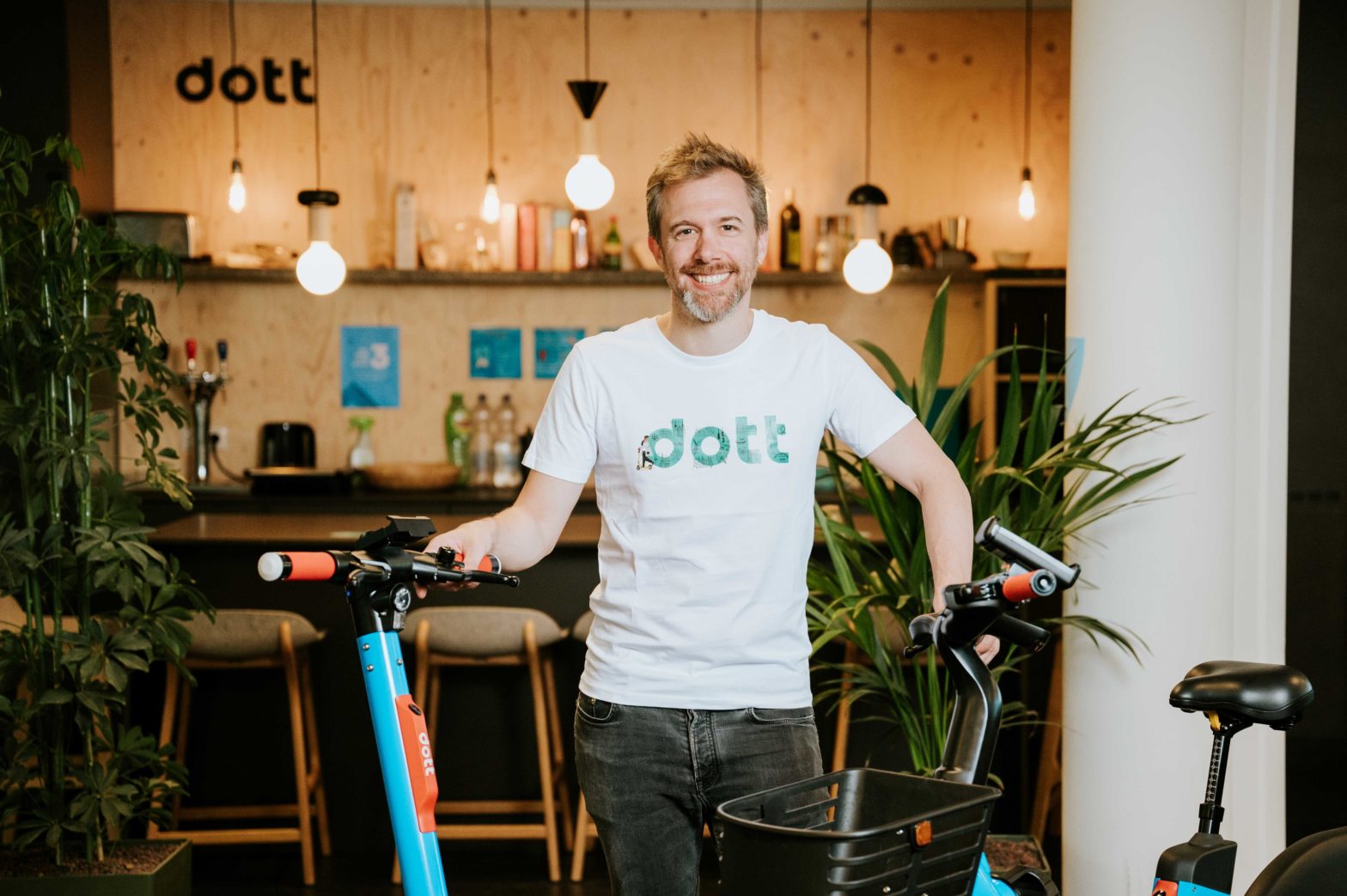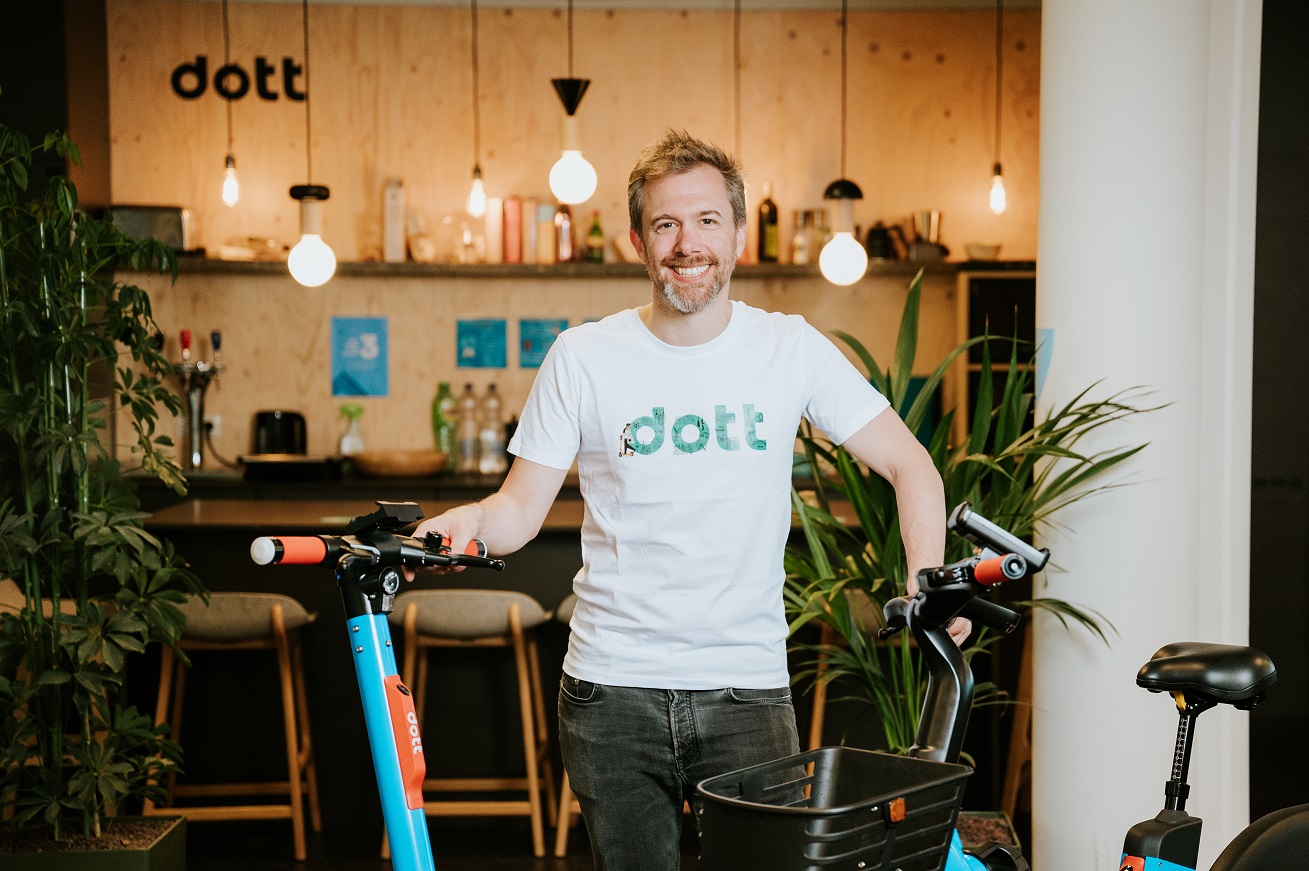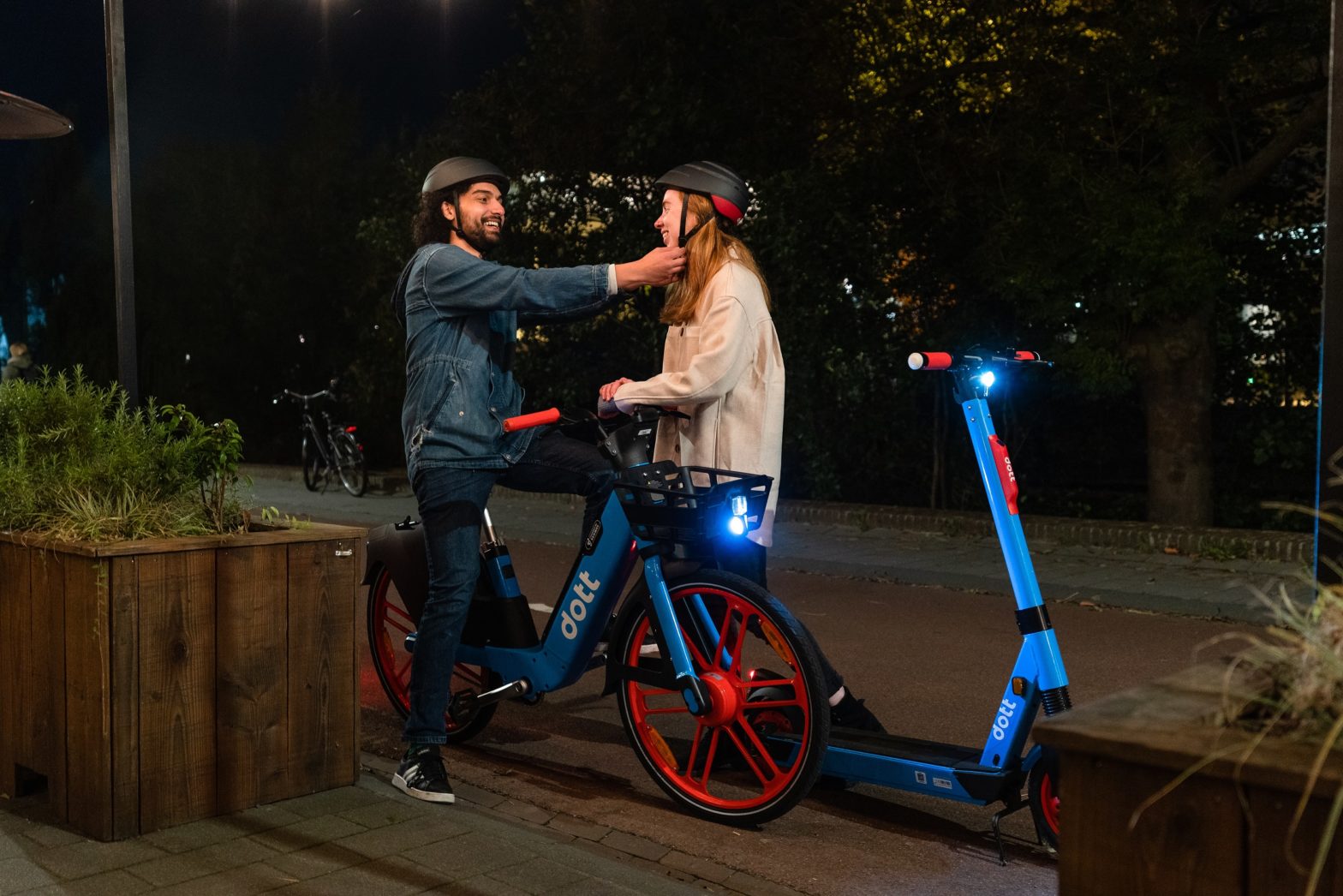
Photo: Dott
Working with cities to unlock modal shift
14 September 2022
By: Maxim Romain, Chief Operating Officer, Dott
Cities and micromobility operators like Dott share the goal of an urgent shift toward sustainable transport. In order to unlock micromobility’s modal shift potential, we must move beyond early adopters to reach a critical mass of daily active users. A new kind of public private partnership, focused on socially inclusive initiatives that cement micromobility in city transport systems, will power positive change.

Growth: Micromobility is already growing beyond early adopters
In 2019, 81 percent of shared micromobility riders were men aged 18 to 24. Now, 35 percent of Dott’s new e-scooter riders are women. Since introducing e-bikes in 2021, we’ve seen even more encouraging results: the share of women in the new-rider category for e-bikes has jumped as high as 51 percent and nearly 40 percent of all first-time e-bike riders are aged between 37 and 55 years-old.
The data is trending in the right direction, but a focused effort from cities and operators will unlock further modal shift sooner.
We have identified three barriers to building more inclusive micromobility systems:
- road safety risks
- vehicle availability for commuters
- intermodality and multimodality
When cities and operators collaborate to overcome these four barriers, climate action goals are well within reach.
Safety: Mitigating road safety risks and negative perceptions
To unlock modal shift, non-riders and apprehensive potential riders need assurance that micromobility is safe. For this, city investment in cycle lanes is a top solution. In a survey of non-riders in the UK, France and Italy, nearly 40 percent report insufficient cycle lanes as the top barrier to micromobility. For cities like Paris, which has already built more than 1,000 kilometres of bike lanes, we see up to 10 percent more rider diversity in both age and gender.
The burden is not only with cities. Operators must work to dispel myths, reassure apprehensive riders and earn the trust of all road users. This year, Dott launched weekly women-only safety training in London to help mitigate gender-based misconceptions. We also worked with elderly and blind advocacy groups in Madrid, Milan and Rome to promote empathetic rider behaviour. In both instances, our interactive campaigns educate riders on how even small behavioural adjustments could make a difference for vulnerable road users.
Our vehicles are always safe. Dott’s unique in-house employment model delivers safe vehicles maintained daily by our team of trained mechanics. All safety-critical, vehicle and battery-charging processes are conducted by our own staff, all of whom are employed, trained and supervised internally. We take full responsibility. No outsourcing, no gig-economy, just transparency. As a result, at least 96 percent of our fleet is available and in working condition for riders when needed.
Availability: Optimising fleet size and distribution
Small fleet sizes, limited parking corrals and restrictive operating areas discourage daily use. In London, these barriers drove 34 percent of first-time riders to tell us they would ride daily if vehicles were more available.
Corral parking – both safer for non-riders and reliable for daily users – delivers usage data which helps right-size fleets. For example, we know riders will walk no more than two minutes or 150 metres to find a vehicle before choosing other transportation. Also, one-third of Dott riders connect with public transport. We use learnings like these to recommend corral locations optimised for commuters.
Our city partners can support the efforts of responsible operators who promote inclusion by providing mechanisms for earned fleet increases and microsubsidies to achieve social goals, such as expansion into traditional underserved areas.
Intermodality and multimodality: A vehicle for each need
Transitioning away from polluting vehicles requires an all-of-the-above strategy. By mirroring the affordability of public transport with €2 fares and commuter ride passes, partnering for deeper MaaS integrations and delivering multimodal fleets we can make sustainable transportation the simple choice for all commuters.
Multimodal tenders for e-scooters and e-bikes are particularly valuable to unlocking this shift. Since launching e-bikes this year, we’ve seen a compelling demographic shift in Dott ridership. For example, in Rome, more than half of Dott e-bike riders are women and 41percent are above the age of 37. We also launched two first-of-their-kind multimodal programs in June. In Ghent, e-bikes and cargo bikes offered with Netherlands-based Baqme are bringing more women, families and older riders into micromobility. In Grenoble, a pilot with French start-up Omni delivers e-scooter attachments for wheelchair users.
Our efforts are working
Dott’s mission is to create a world designed for people, not cars. To achieve this vision, operators must partner with city administrations to create smart regulations and infrastructures that promote modal shift. It’s already working: 64 percent of Dott riders in regulated markets report using their car, moped or ride-hail less or not at all.





